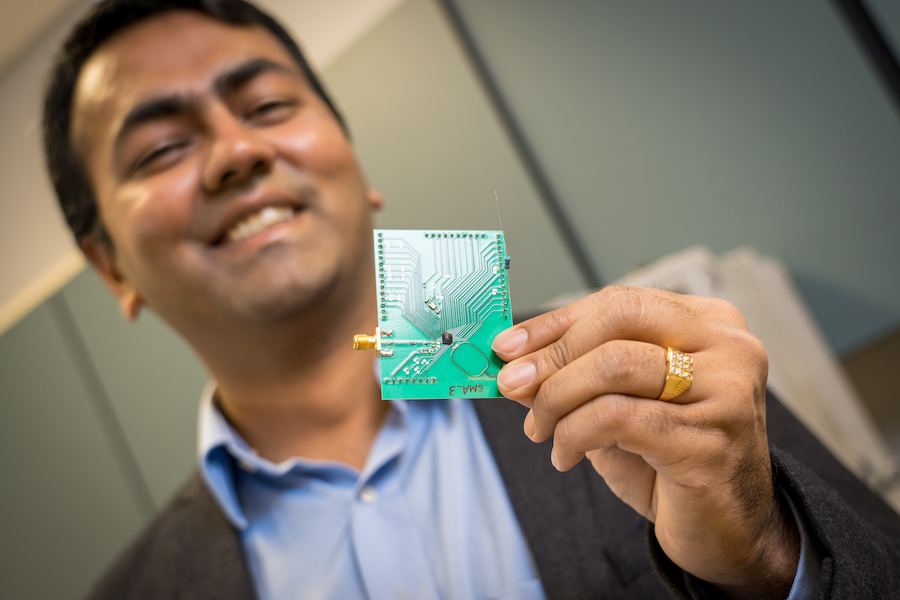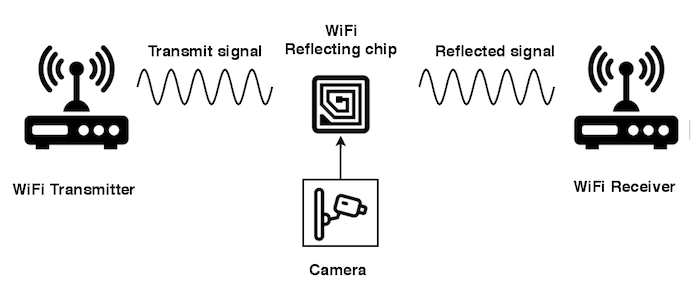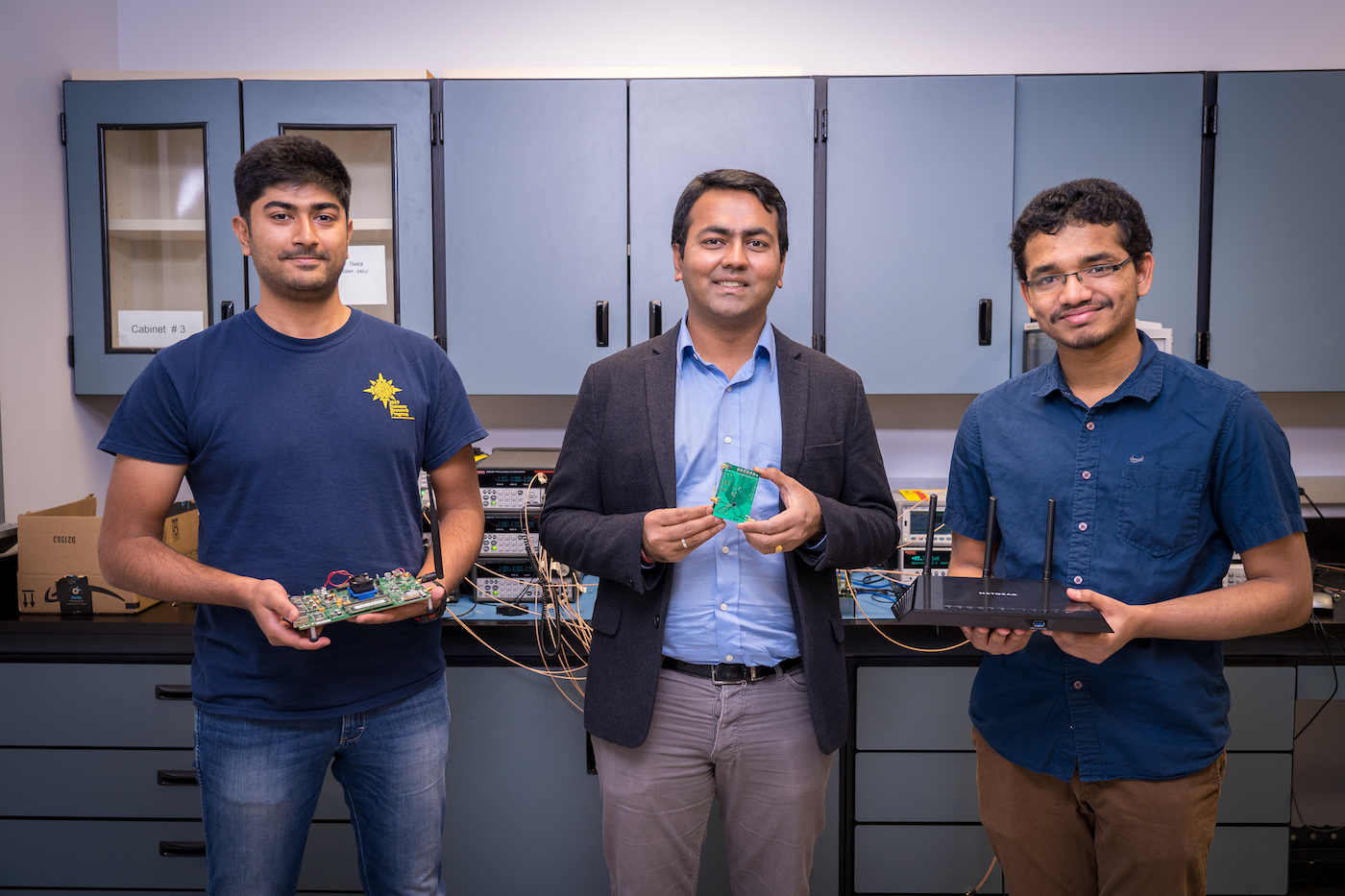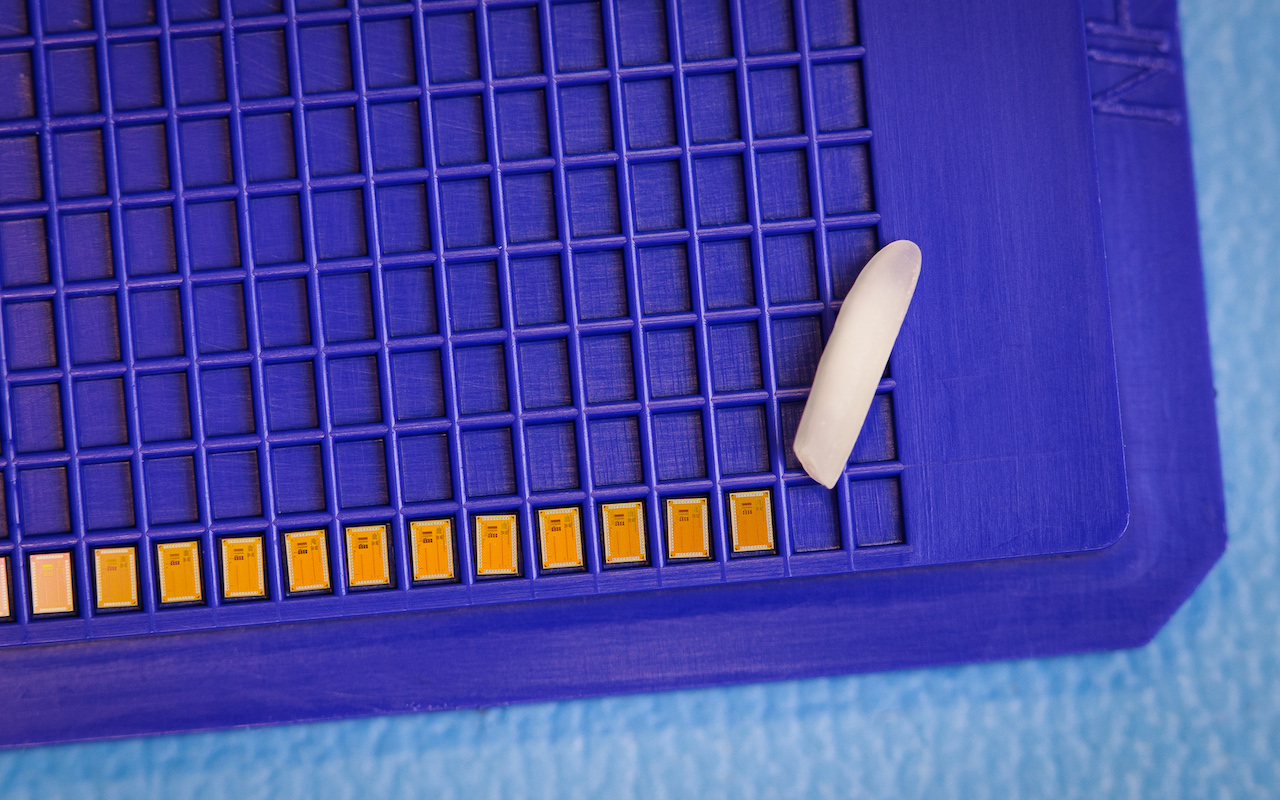
New Chip Brings Ultra-Low Power WiFi Connectivity to IoT Devices
Published Date
By:
- Liezel Labios
Share This:
Article Content
More portable, fully wireless smart home setups. Lower power wearables. Batteryless smart devices. These could all be made possible thanks to a new ultra-low power WiFi radio developed by electrical engineers at the University of California San Diego.
The device, which is housed in a chip smaller than a grain of rice, enables Internet of Things (IoT) devices to communicate with existing Wi-Fi networks using 5,000 times less power than today’s WiFi radios. It consumes just 28 microwatts of power. And it does so while transmitting data at a rate of 2 megabits per second (a connection fast enough to stream music and most YouTube videos) over a range of up to 21 meters.
The team will present their work at the ISSCC 2020 conference Feb. 16 to 20 in San Francisco.

UC San Diego electrical and computer engineering professor Dinesh Bharadia holds a PCB onto which the WiFi radio is mounted (component underneath the black blob).
“You can connect your phone, your smart devices, even small cameras or various sensors to this chip, and it can directly send data from these devices to a WiFi access point near you. You don’t need to buy anything else. And it could last for years on a single coin cell battery,” said Dinesh Bharadia, a professor of electrical and computer engineering at the UC San Diego Jacobs School of Engineering.
Commercial WiFi radios typically consume hundreds of milliwatts to connect IoT devices with WiFi transceivers. As a result, WiFi compatible devices need either large batteries, frequent recharging or other external power sources to run.
“This WiFi radio is low enough power that we can now start thinking about new application spaces where you no longer need to plug IoT devices into the wall. This could unleash smaller, fully wireless IoT setups,” said UC San Diego electrical and computer engineering professor Patrick Mercier, who co-led the work with Bharadia.
Think a portable Google Home device that you can take around the house and can last for years instead of just hours when unplugged.
“It could also allow you to connect devices that are not currently connected—things that cannot meet the power demands of current WiFi radios, like a smoke alarm—and not have a huge burden on battery replacement,” Mercier said.
The WiFi radio runs on extremely low power by transmitting data via a technique called backscattering. It takes incoming WiFi signals from a nearby device (like a smartphone) or WiFi access point, modifies the signals and encodes its own data onto them, and then reflects the new signals onto a different WiFi channel to another device or access point.

Illustration of the backscattering process.
This work builds on low-power WiFi radio technology that Bharadia helped develop as a Ph.D. student at Stanford. In this project, he teamed up with Mercier to develop an even lower-power WiFi radio. They accomplished this by building in a component called a wake-up receiver. This “wakes up” the WiFi radio only when it needs to communicate with WiFi signals, so it can stay in low-power sleep mode the rest of the time, during which it consumes only 3 microwatts of power.

Bharadia (center), with graduate student researchers Rohit Kumar (left) and Manideep Dunna (right), displaying a setup in which the WiFi radio would be backscattering between two WiFi compatible devices.
The UC San Diego team’s improvements to the technology also feature a custom integrated circuit for backscattering data, which makes the whole system smaller and more efficient, and thus enables their WiFi radio to operate over longer communication range (21 meters). This is a practical distance for operating in a smart home environment, the researchers said.
“Here, we demonstrate the first pragmatic chip design that can actually be deployed in a small, low-power device,” Mercier said.
Paper title: “A 28µW IoT Tag that can Communicate with Commodity WiFi Transceivers via a Single-Side-Band QPSK Backscatter Communication Technique.” The student researchers include Po-Han Peter Wang, Chi Zhang, Hongsen Yang and Manideep Dunna, UC San Diego.
Share This:
You May Also Like
Stay in the Know
Keep up with all the latest from UC San Diego. Subscribe to the newsletter today.



